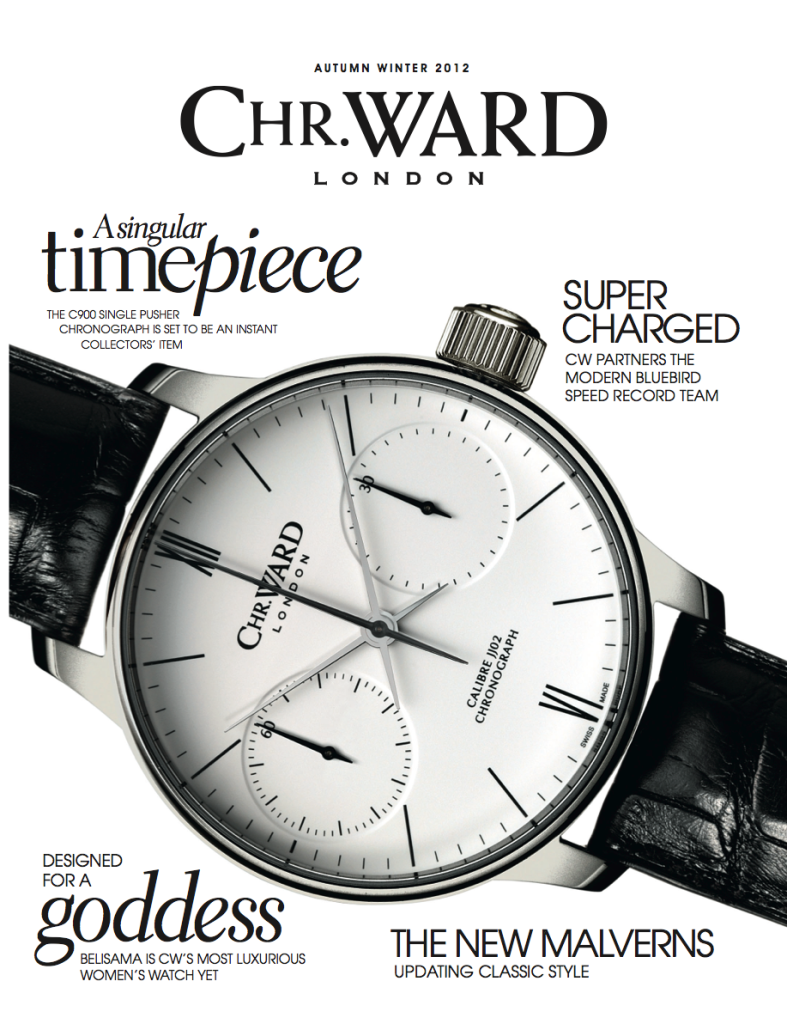Brands
Print Is The New Black
The Internet is great and all, but there’s something special about curling up on the couch with a magazine, or thumbing through a glossy publication at the salon. That sentiment has caught up with the content marketing industry, as brands are increasingly turning to print magazines as a way to place beautiful and compelling content in the hands of customers.
And it’s not just the heartstrings of their customers those brands have in mind when jumping on the branded print mag trend; they’re also being mindful of their own purse strings.
“Why spend €40,000 a page to advertise in Vogue when, for the same amount of money, you can publish an entire magazine?” Alice Litscher, a fashion communication professor at the Institut Français de la Mode in Paris, asked The New York Times.
Why indeed.
“Why spend €40,000 a page to advertise in Vogue when, for the same amount of money, you can publish an entire magazine?”
A decade into a trend of fashion brands producing their own niche publications, from Acne’s long-running Acne Paper to Net-a-Porter’s forthcoming PORTER, it seems that logic has legs, and branded print magazine are popping up across all sorts of industries.
But ask someone from John Deere’s The Furrow about this hot new trend, and he might respond with a chuckle.
“Folks have been doing this for some time,” said David Jones, Publications Manager of the 118-year-old magazine. “I think what is trending is that folks have put a name to a practice with ‘content marketing’, and they’re starting to pay attention to the successes that we and others have had.”
Jones has a point. Old editions of The Furrow are fought over on eBay; so are back issues of GMC Truck News. Jones said Subaru’s Drive Performance magazine is still on his regular reading list.
But it’s hard to ignore the rush of new names in the game. Whether it’s a way to stand out in the ever-crowded market of branded content or simply a response to the growing nostalgia for print, it seems that everything old is new again.
There are plenty of challenges though. The cost of creating and distributing print magazines is high, and gauging ROI can get tricky. Instead of web analytics like page views, time-on-page, and bounce rate, you have circulation figures. That means that management has to buy in if a branded print mag is going to survive and thrive.
“In my history, [magazines were] all built around getting as much content as possible on a page. I like the idea of giving as much space to a piece of content as we want.”
Colin Tunstall, Editor-in-Chief of the beautiful Saturdays Magazine, said the the surfing retailer can only achieve its goal of accurately portraying the Saturdays lifestyle if there aren’t any strings attached up the corporate ladder.
“We don’t do it to make money,” he said of the content-heavy, 300-page magazine. “We do it because we like it, and we think it’s cool.”
That financial freedom lets Saturdays take liberties, such featuring a 20-page photo essay of sunsets (with one sunset per page), that might give the CFO of a traditional publisher fits.
“Having the opportunity to do something like that is uncommon,” said Tunstall. “In my history, [magazines were] all built around getting as much content as possible on a page. I like the idea of giving as much space to a piece of content as we want.”
That kind of freedom can be a costly, both in money, manpower, and internal strife. Google’s short-running (but awesome) Think Quarterly magazine was a lesson in how rigid bureaucracy can become the bane of the print mag. According to someone familiar with the project within Google, lengthy approval chains through senior executives, legal and PR made the cost of the publication too high to justify. After launching the in 2011, Think Quarterly’s content now appears to be folded into the search giant’s Think Insights website.
It helps that brands don’t have to look too far afield to find quality content producers in their fields – after all, in many cases they are the experts. Jones said he doesn’t worry too much about the content in The Furrow because he knows his contributors know what they’re talking about.
“These folks are giants in the world of ag-communications,” he said. “Many of them are active, full-time farmers in addition to being contributing editors for us, so their word is unquestioned when it comes to what is appropriate for us to cover.”
That’s the kind of thing Walmart Live Better magazine might be hoping to say about their own content soon. The publication launched in Canada earlier this year as a partnership between Walmart Canada and Rogers Media Inc., and there’s no doubt that the brand has placed an emphasis on high quality, boasting of the publication’s “top Canadian editors” and Rogers Media’s reputation for “premium content.”
Coming out with expertly-crafted content from the get-go was especially important for a publication with a substantial audience in place before the first issue was printed. With 20 million shoppers monthly in Canadian Walmart stores, Live Better launched with a print circulation of one million. And that’s not including readers who access the content on the Live Better website, tablet app, social media or email newsletter.
It’s just geared 100 percent toward a simple goal: making something cool.”
Regardless of audience size, being on the inside of an industry can give brands a unique leg-up on traditional publishers. Who, for example, knows luxury vacations better than The Four Seasons? It’s no wonder that the Four Seasons Magazine claims a readership of 1.1 million in 36 countries, with the average reader boasting a net worth of $4 million.
Most brands see print magazines as a vehicle to reinforce their brand without directly selling their product.
“It’s cover-to-cover content,” Tunstall said. “There is no reference to our clothes. It’s just geared 100 percent toward a simple goal: making something cool.”
That goal is fairly pervasive in fashion brands’ print mags. For some, readers overlooking their product entirely is a cause for celebration.
“We meet people from various fields who know of the Paper and not of the clothes, which is the best result one could hope for,” Acne Paper’s Mikael Schiller told The New York Times.
Jones said The Furrow also avoids any mention of John Deere products, and has been committed to that stance since the 1950s. It’s not that specific philosophy, however, that Jones said is so important. Whether it involves blatantly marketing a brand’s products or subtly selling the brand lifestyle, what matters most is staking out a strategy and sticking to it.
UK-based luxury watchmaker Christopher Ward’s magazine, for example, may carry content dripping with their own watches, but that decision was based directly on the interests of their target audience.
“We have a mixture of articles about our watches and appropriate ‘lifestyle’ articles,” said Christopher Ward Co-Founder Mike France. “This seems to work incredibly well for our customers, who are hungry for information about the background to the development of the watches and love the technical details we can go into but also enjoy the eclectic nature of the lifestyle pieces.”
“… everything old is new again.”
With the magazine now in its third year, Christopher Ward’s sense on what watch aficionados want seems to be paying off. The popularity of the magazine has led to an additional issue scheduled for 2014.
Though the recent wave of branded print magazines may be an old trend made new in the current brand publishing arms race, that’s not to say the newbies are without a sense of their own work’s history.
“It becomes a little balance of innovation and classic at the same time,” said Turnstall.
Contently arms brands with the tools and talent to become great content creators. Learn more.
Image by zefart/ Shutterstock.comGet better at your job right now.
Read our monthly newsletter to master content marketing. It’s made for marketers, creators, and everyone in between.






